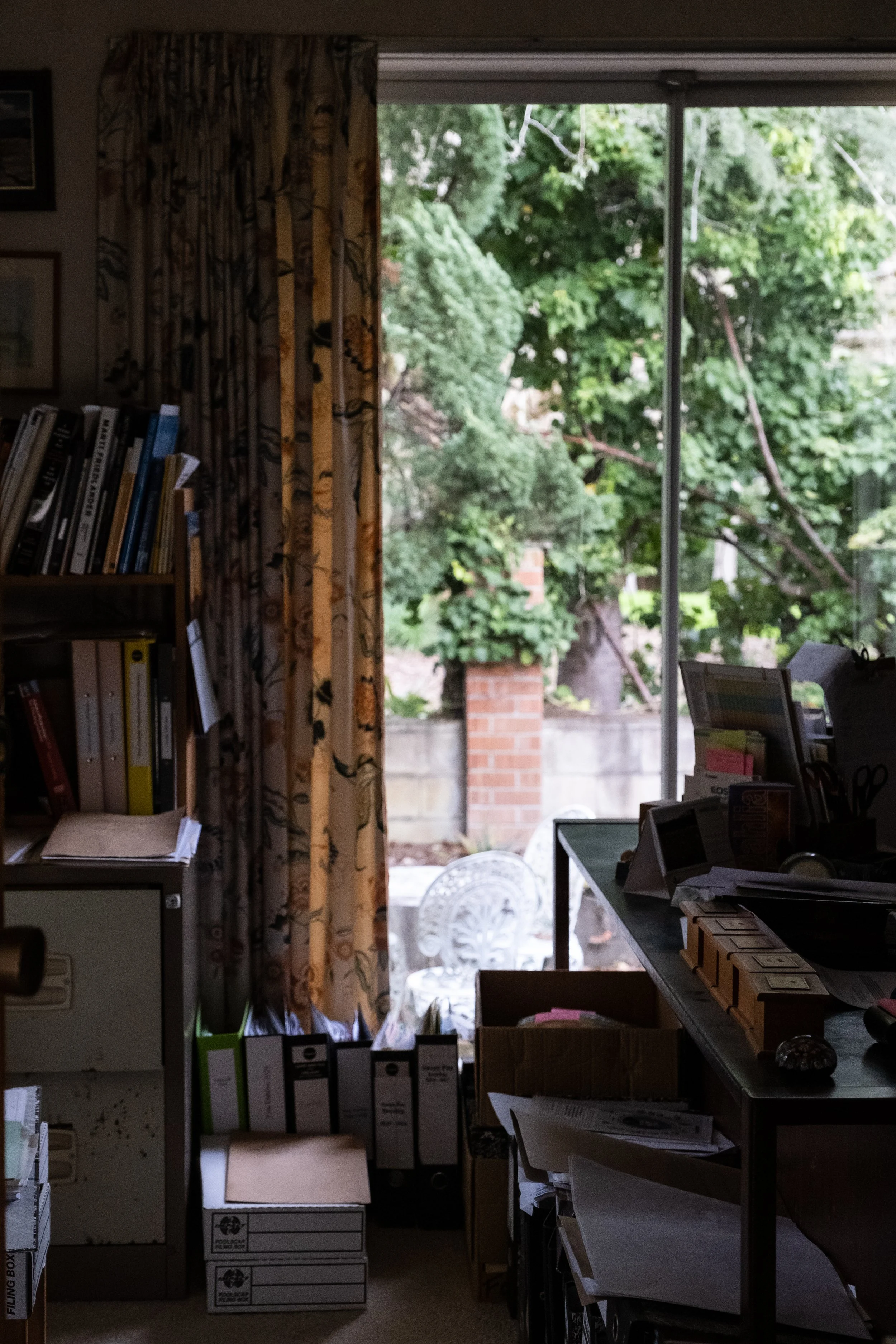
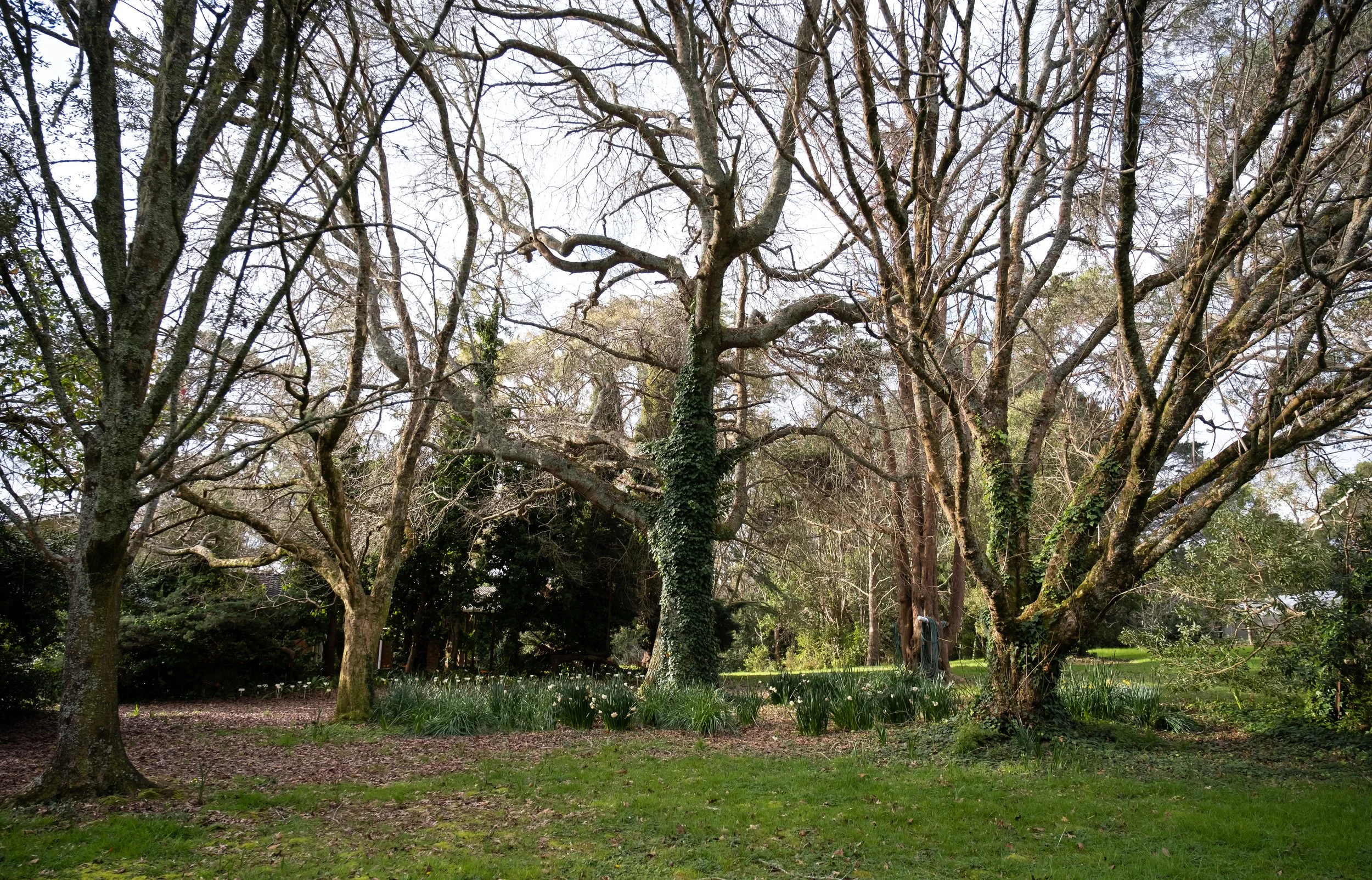

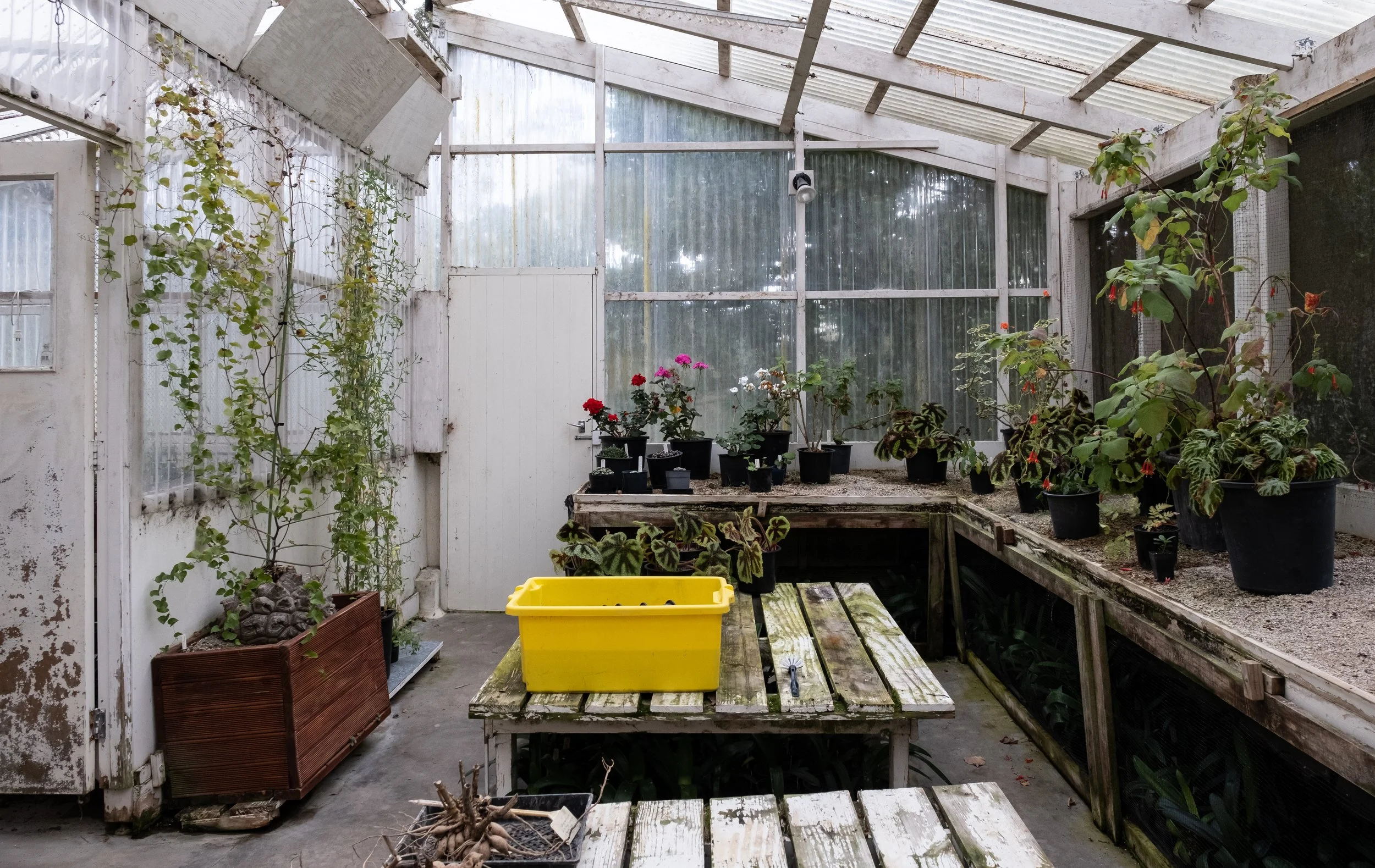
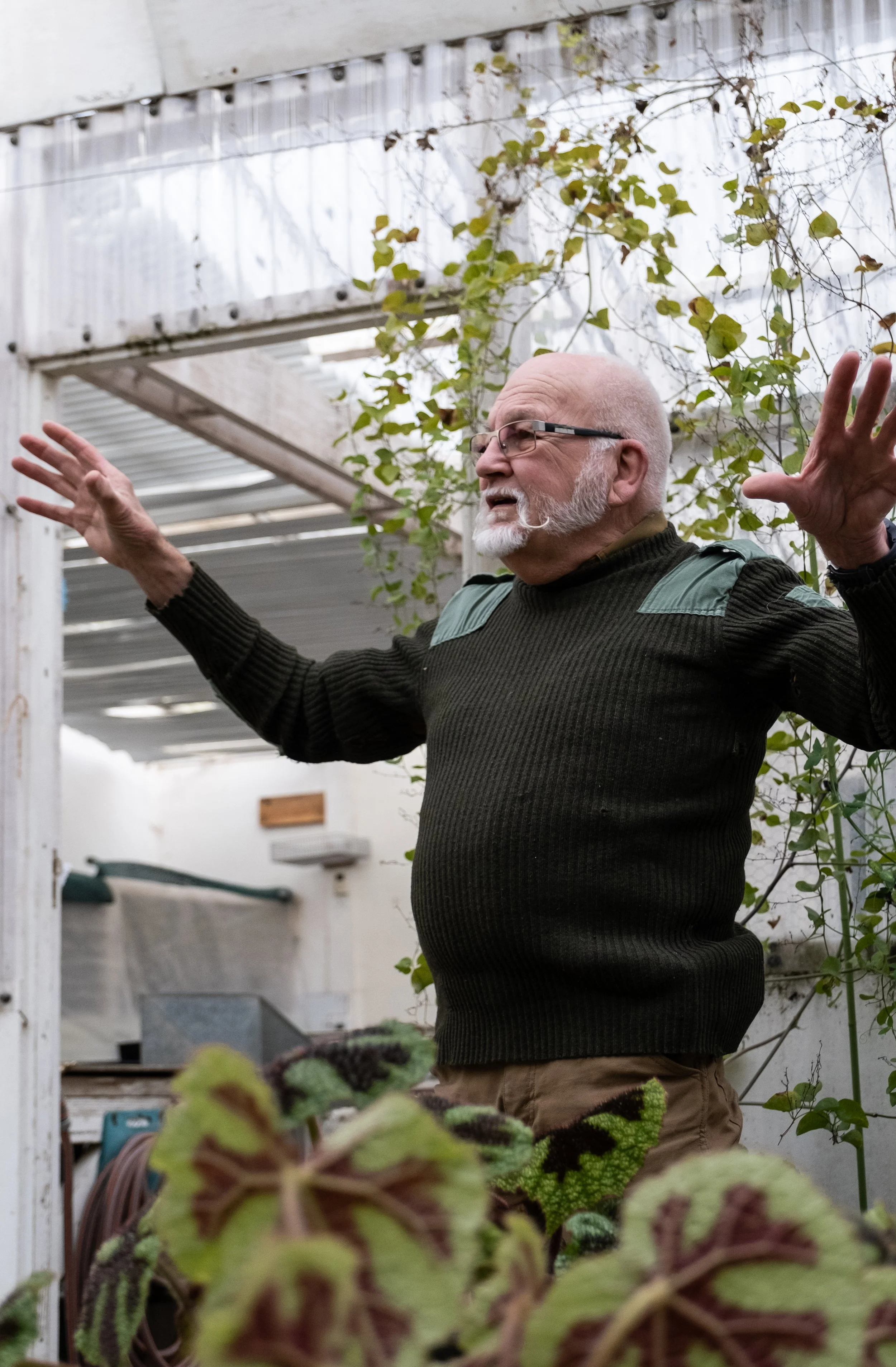
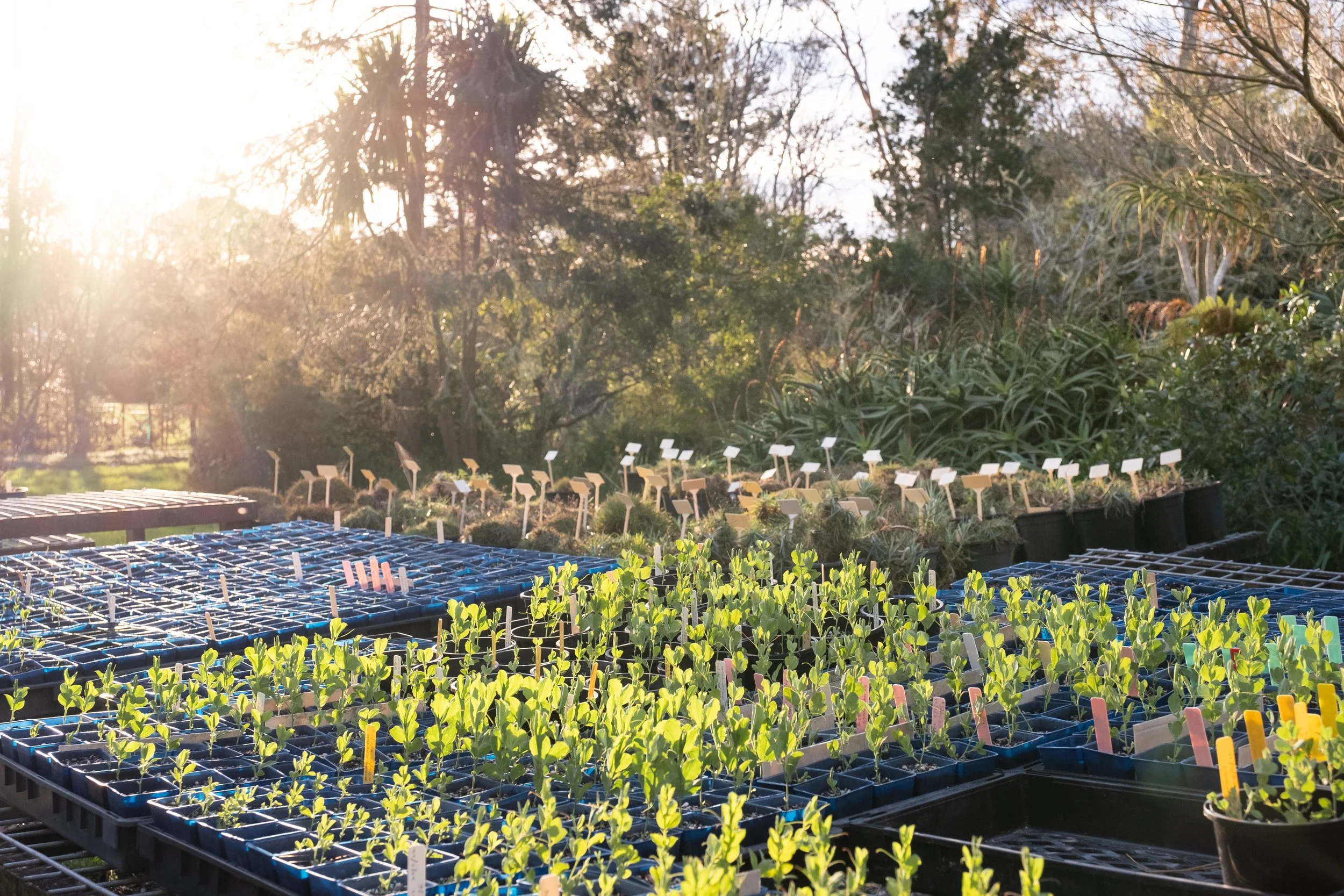

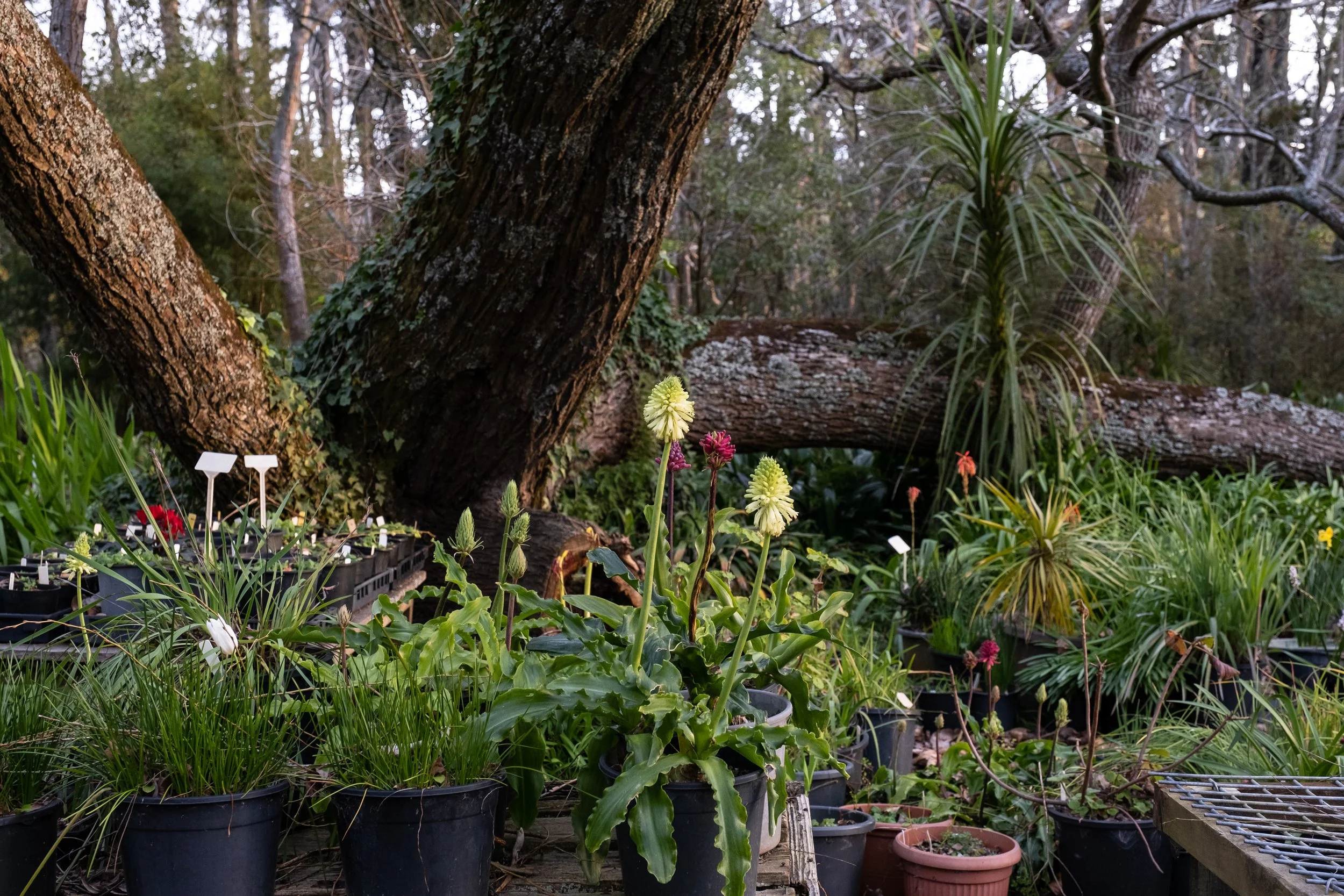

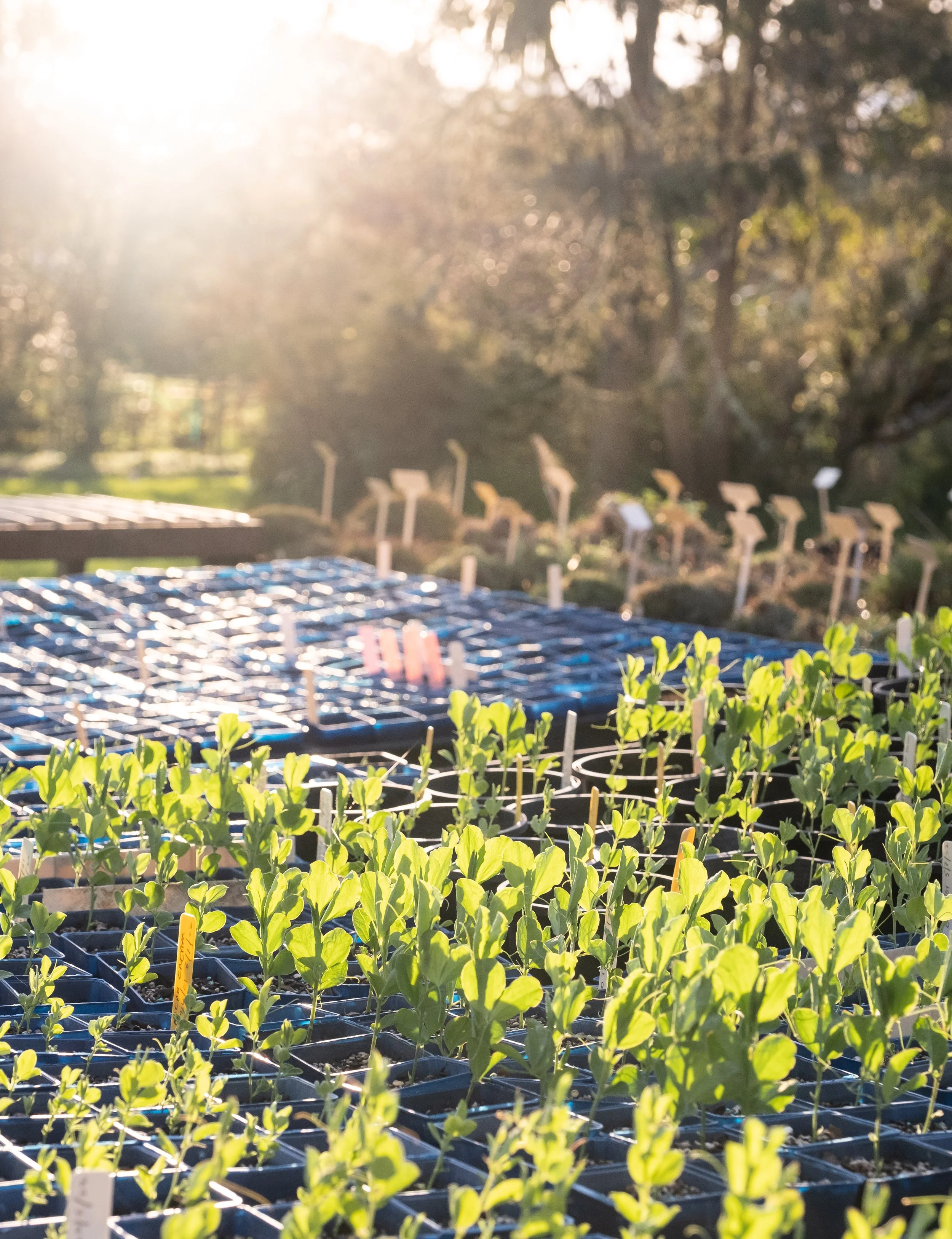

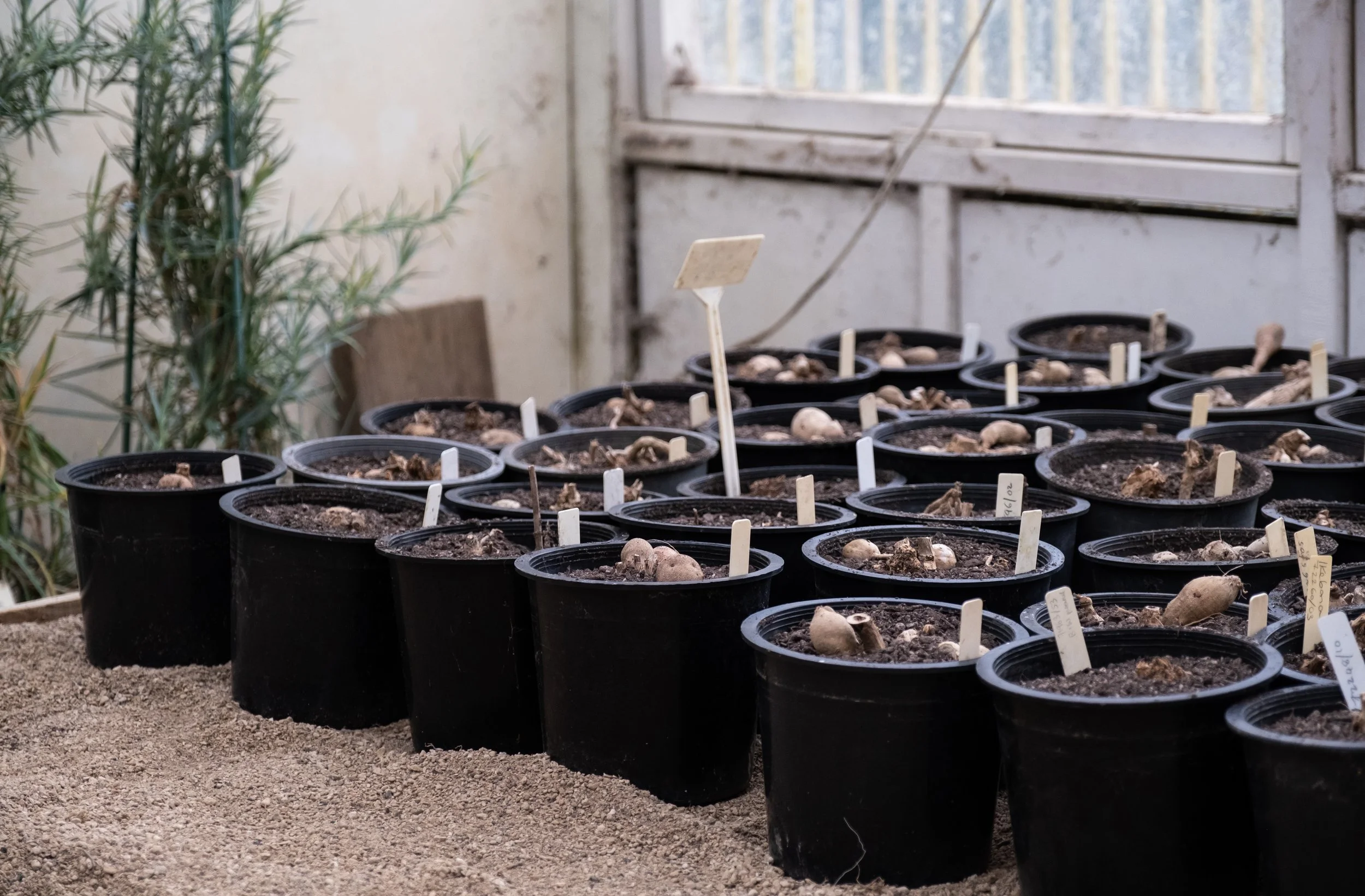
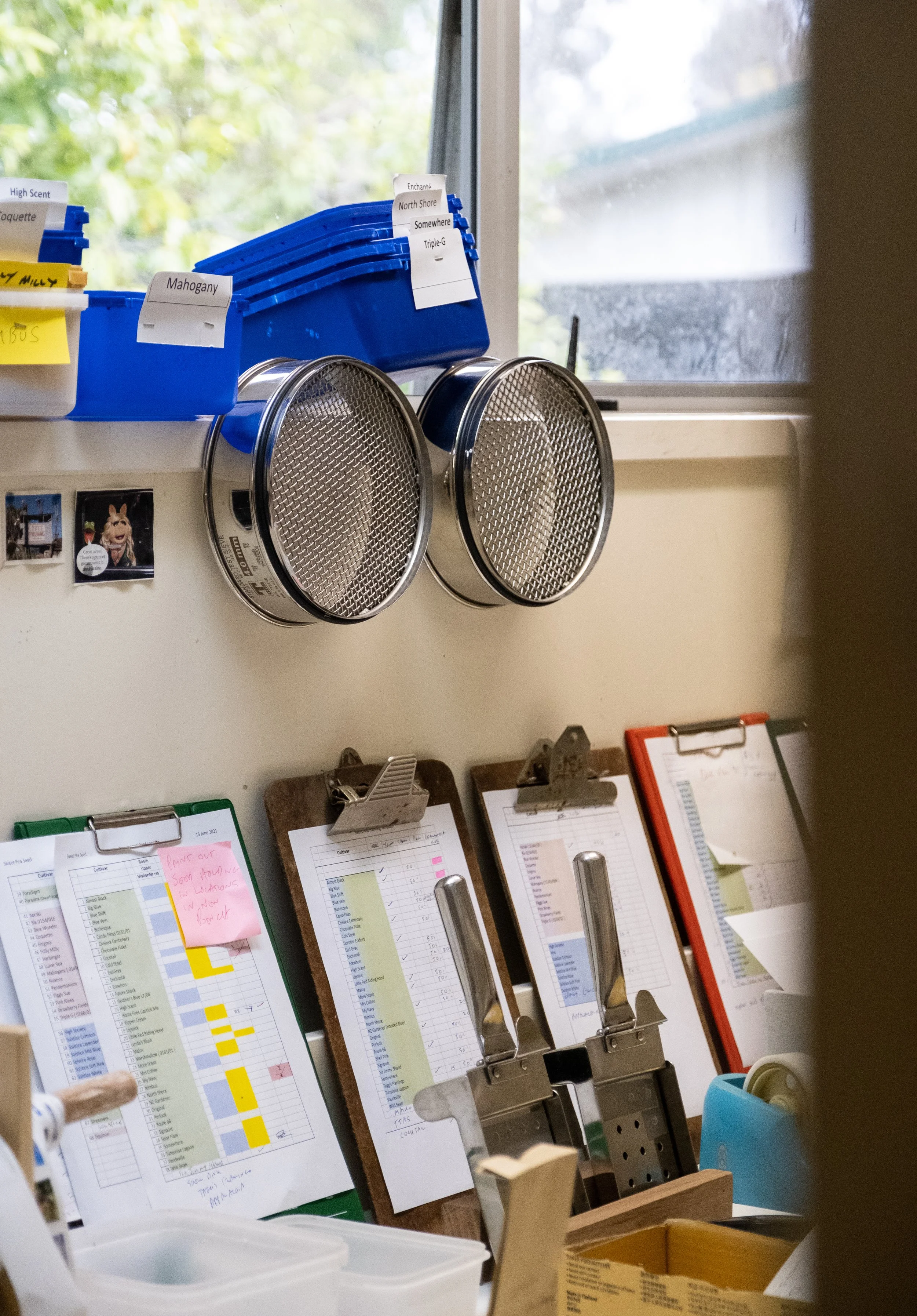
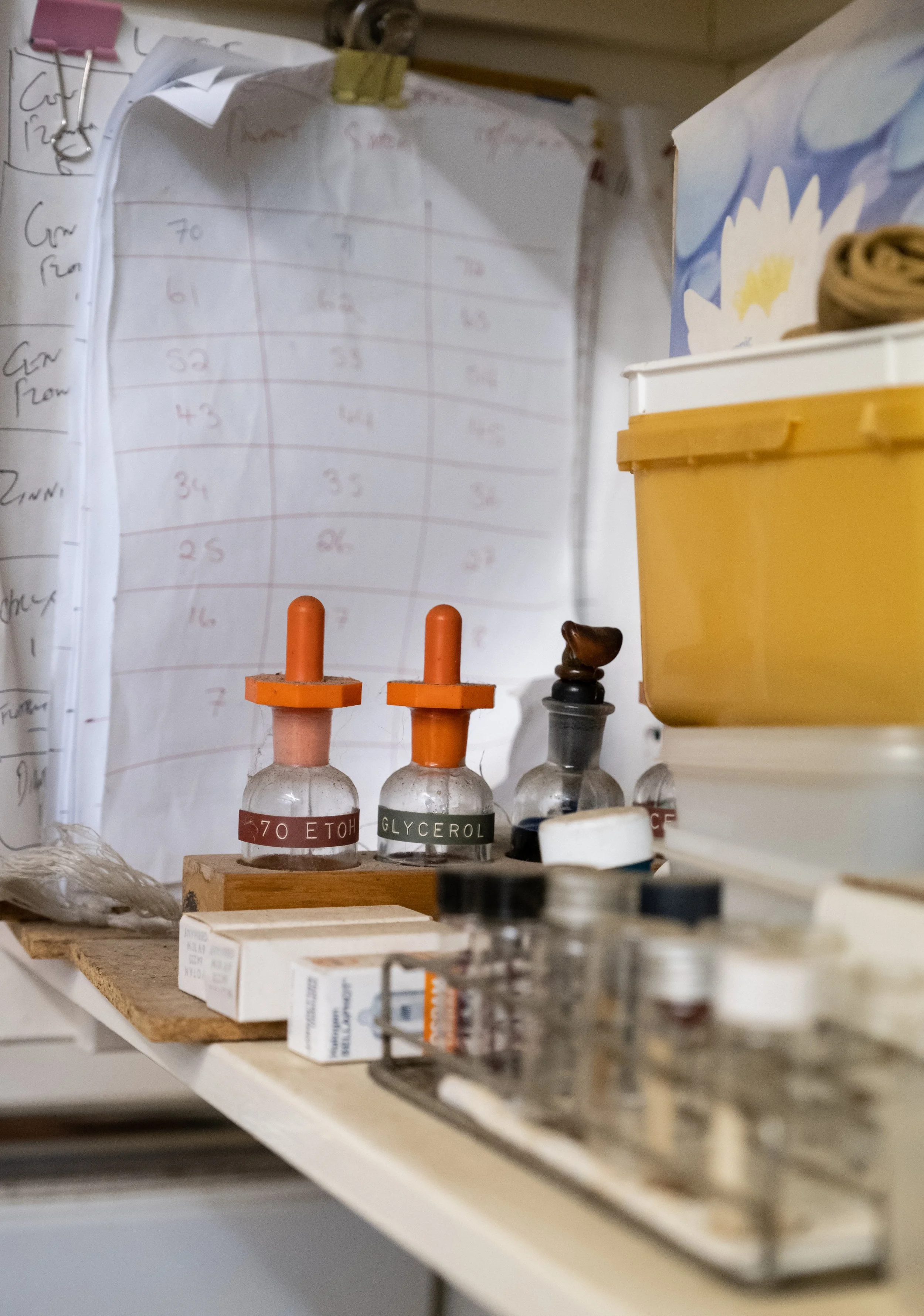

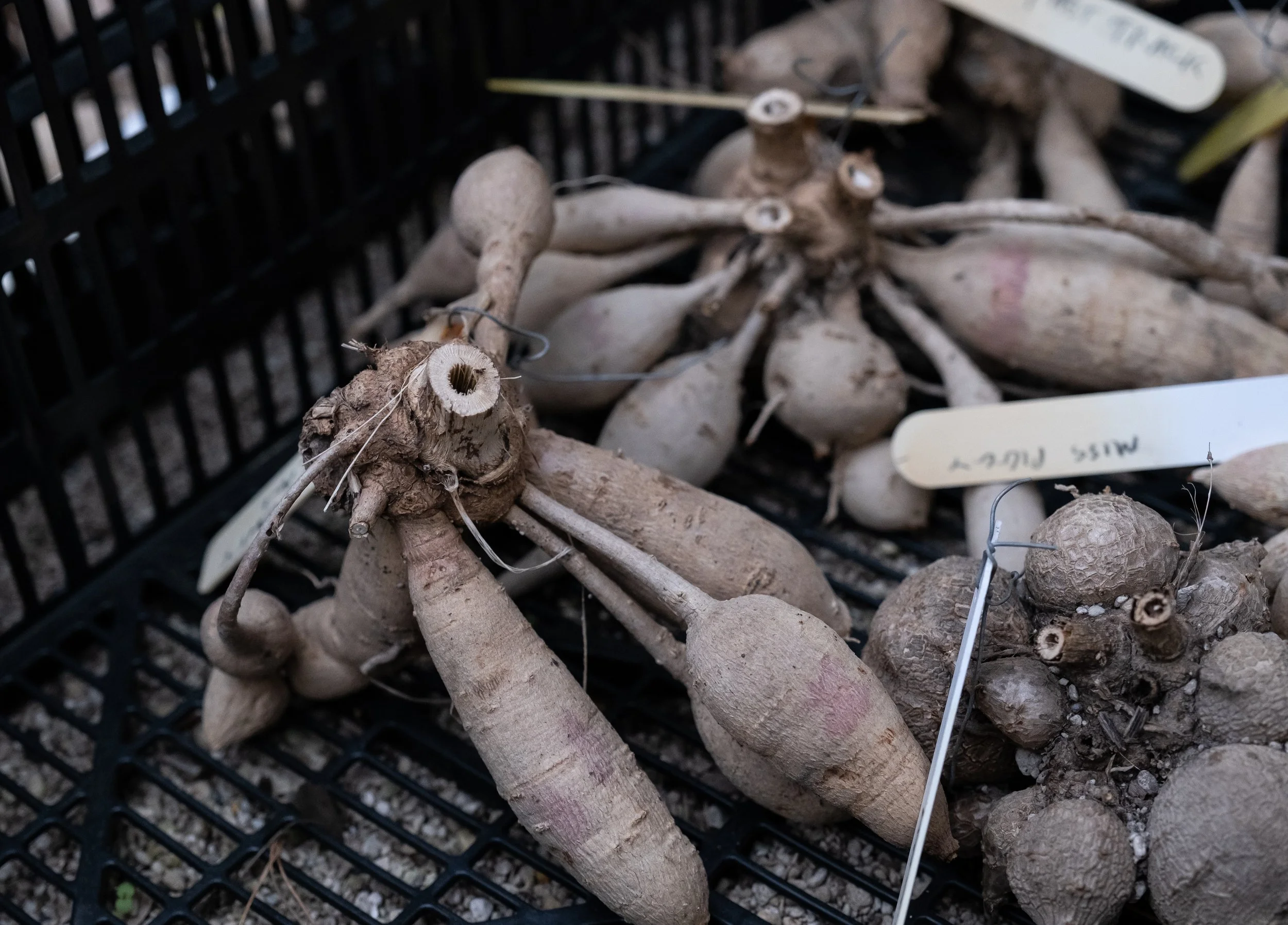




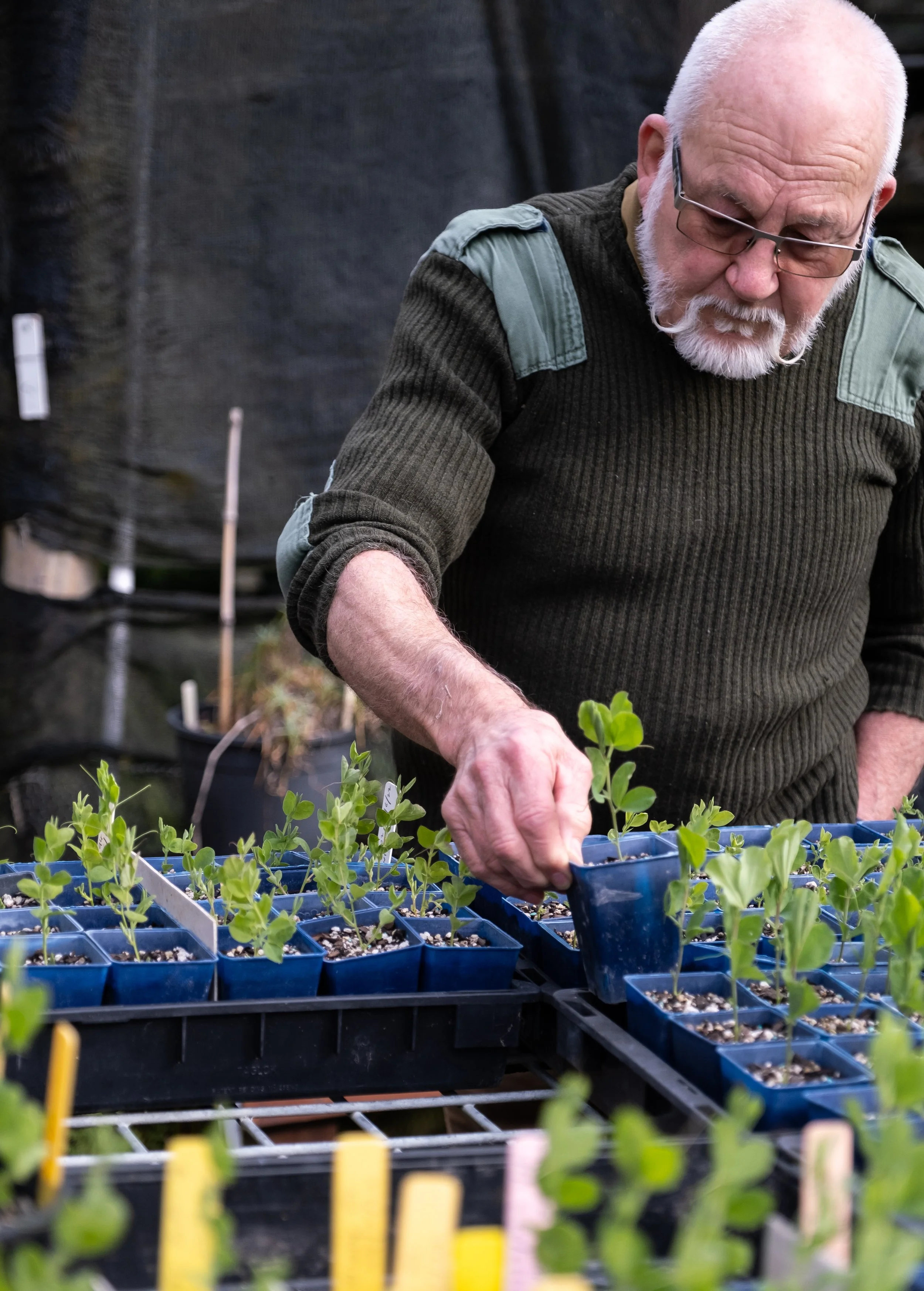
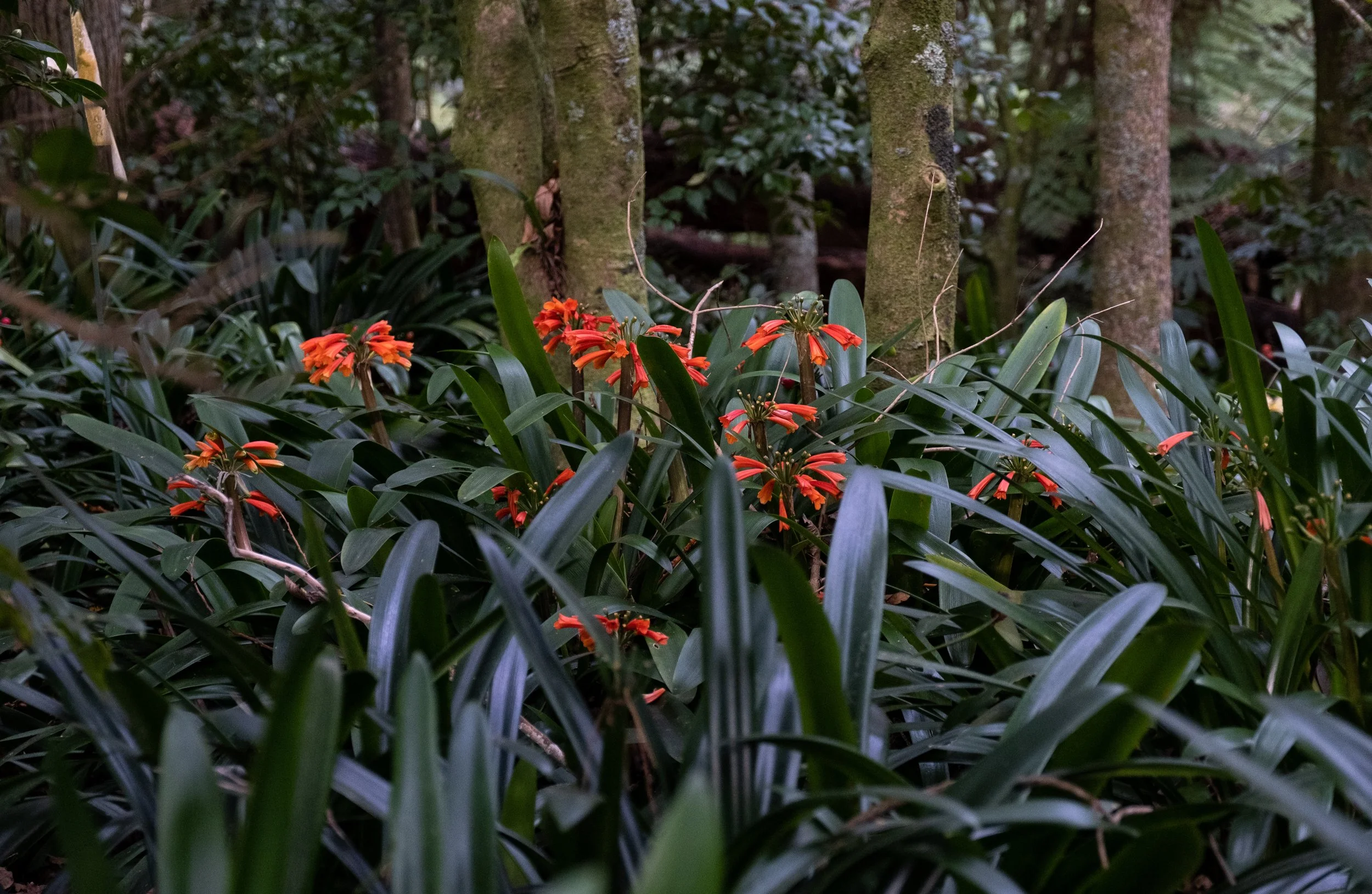


Amid the clean, clear design of the new urban concept garden centre, a somewhat incongruous basket of gnarled and dirty tubers sat beside the dahlias on display. They made for a somber contrast to the brightly packaged bags, and the empty peg from which the Dahlia ‘Café au Lait’ had all been snaffled up. A couple of inquisitive types looked a little closer. Twisting and turning the spidery mass, a small label hinted at just what sort of magic was on offer. But the small tag couldn’t tell the full story. These were tree dahlias, Dahlia imperalis to be formal about it, and they had made their way through time and space to this basket for a few lucky customers to take home. They almost didn’t make it. The grower, Dr Keith Hammett PhD, had considered composting them, only to be told by his assistant that he was doing no such thing. These plants were some twenty-five years in the growing, and to see that go to waste would be criminal.
In New Zealand gardening circles, few people are as known and respected as Dr Hammett. It’s a reputation built on decades of work dedicated to plant breeding, and while his name is synonymous with dahlia, and his website will tell you he also breeds sweet pea, dianthus, amaryllis and clivia, it’s a list that skims the surface of his work. He trained as a Plant Pathologist in his native England and not long after graduating was recruited to join New Zealand’s horticultural research institute, the DSIR. He brought with him a wife and child and the passion for dahlia and sweet pea that had led him into this field.
Growing up in post-war England, the nation was rebuilding and recovering from the devastation that even a victor experiences after so much trauma. Gardening clubs and flower shows were a welcome change from the preceding years of turmoil for people looking to reconnect with the beauty of nature. And amid those older people looking for a return to normalcy amongst the rows of dahlias or sweet pea, was a teen-aged Keith Hammett. He gleaned wisdom from the older gardeners and found something that helped him realise that he might actually be a bit smarter than his school grades at the time suggested. A little bit of practical experience gave some relevance to the lessons in class and his trajectory began.
The origins of his love for dahlias and sweet peas are simple, and a story we can all relate to. It’s in the genes. One uncle grew dahlia. Another uncle used sweet pea to separate his veggie patch from his flower bed. Two lines from which something fantastic happened. And from that he has grown both loves, the tendrils of sweet pea wrapped around success with dahlia. He has grown and shown dahlia competitively. He still judges and holds positions in the dahlia world. But he has also stepped back from the competitive pursuit of a ‘perfect’ dahlia. In the 1980s he made a quest to Mexico, to see the dahlia in the wild and was captivated by the traits that had disappeared from the show plant. A show dahlia appears without foliage or context. He saw the rich dark leaves and strong stems of the wild dahlia as something worth celebrating in themselves. The simple forms of the flowers, and ring of a corona show you the purposeful beauty of its existence. It changed Keith’s approach to breeding.
It’s hard not to paint a clichéd picture of following the White Rabbit around the garden as Keith leads the photographer and I from one patch of wonder to the next. It’s the end of winter and most of the plants are dormant, but the beauty and potential in the air fills you with the excitement of spring. It’s a triumph as a garden - there are stories growing everywhere. The huge oak trees started as seed, planted out when Keith first bought the ten acres as bare land in the early ‘70s. He shows us graft lines on mighty pecan trees that were gifted by a research colleague. A line of clivia are a specific cultivar from a friend in South Africa that were wiped out there, but luckily could be repopulated from Keith’s small sanctuary. His collection is the largest in the Southern hemisphere, potentially the world. He points out the Clivia robusta, the swamp clivia, which through his work was established to be its own species. We ramble from one plant to the next.
For a man of science, Keith uses the word magic a lot. And you can’t help but feel there is magic in the air as he shows you around his family home of fifty years. Keith lives in his work. There are folders at hand that he references as he talks about the lineage of a sweet pea, or as he tries to explain how one keeps a passion alive for so long amid the trials of nature. In his sweet pea enclosure he introduces us to a small family. “This is Enigma” he says, before taking me through a quick lesson on genetics that sees me digging back into my fifth form brain (Year 11 in modern parlance). I align what I recall about dominant and recessive genes with what he is explaining to me, until the illumination of why this plant is special dawns on me. “This one here, a friend grew, and it is also an enigma. And this here in the middle is their child, if you will. It’s something very special.”
His excitement, even after patiently waiting through generation after generation of crosses is infectious. He talks about ‘Just Maybe’, another of his sweet peas, that he distributes in the hope that just maybe one will deliver the strong scent he is chasing. But there’s also an element in the ‘Just Maybe’ that just maybe somewhere out there he’ll trigger a passion in someone to take on the baton of plant breeding. We talk about who he sees taking over his work. Once more that word magic comes up. And hope. There is no clear successor to take on the folders outlining decades of breeding lineage or freezer containing over fifty years of research. What Keith talks about is a relay, and he is passing a baton, which he must have faith that someone else will take it up.
Talking with Keith you lose a sense of time. It might be the energy which belies his age, but it’s also perhaps how he talks about his work. He explains his work as a plant breeder as being similar to a game of three-dimensional chess – the genetics are the tangible dimension, but time adds depth, and creates another series of moves and outcomes.
The twenty-five year old tree dahlia project that emerged in stores last spring was one of those outcomes. It’s a project that was put on hiatus and rekindled, having begun decades earlier as a somewhat challenging attempt to produce coloured tree dahlias through hybridisation with the more common dahlia we know. It was slow going, with little luck until a breakthrough when Dr Melanie Gatt who Keith was working with discovered a similarity in chromosones between Dahlia imperalis and D. coccinea. They explored breeding different colours and forms back then, but the plant wasn’t sought after commercially. Such is the challenge of the plant breeder. Where Keith describes the show scene as a form of engineering, looking for the precision and structure, plant breeding he sees as a visual art. He plays with colour and from, but he also creates something for others to use in their creation of gardens and spaces. When he talks about breeding projects, he talks about pursuing ideas of his own, and those suggested in collaboration with other plant lovers. But there’s also a commercial reality in his work. Like any artist he has patrons to satisfy.
It was only through recently checking the viability of seed in his freezer that the tubers that came so close to being compost instead magically ended up in a couple of lucky stores. After two and half decades in cold storage, they emerged to become part of the dahlia resurrection.
Wandering the rows of plants that pepper his garden - a testament to the many years of work, and generations of plants crossed, and successes and failures, and ambitious ideas chased - it’s hard not to ask the obvious question, so I had to - Do you have a favourite? Keith deflects the question with a smile “That’s like asking if you have a favourite child!” I quietly let slip that sometimes I do, and he nonchalantly directs my attention back to one specific cultivar “I always felt this one was somewhat under-appreciated” he tells me. I feel it was a clue. At home that night I do some online shopping, adding that under-appreciated dahlia to a cart. A reminder of a rather magical day.
Follow @drkeithhammett on Instagram for a glimpse into some of Dr Hammett’s ongoing growing and expert tips for your dahlias and sweet peas.